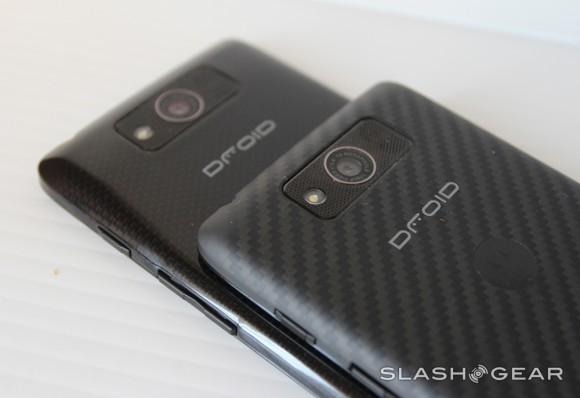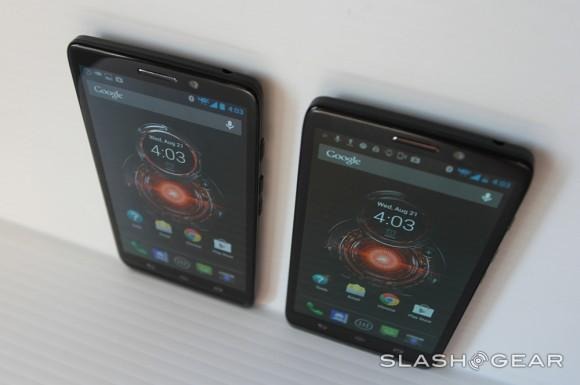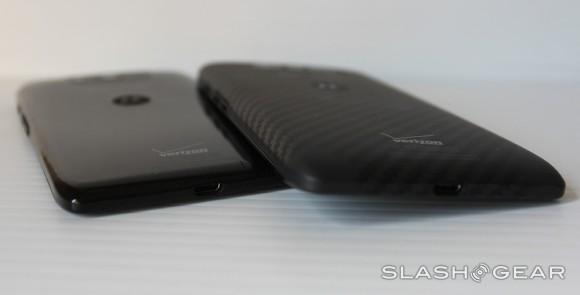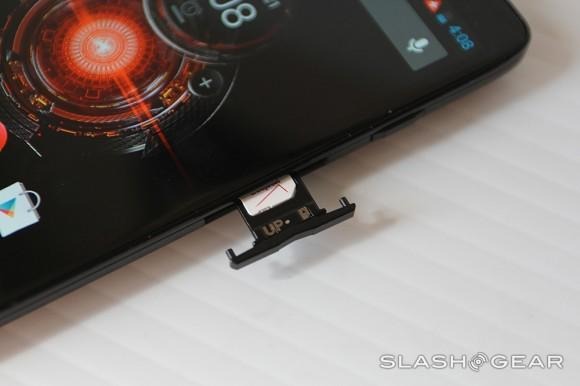DROID Maxx Unboxing And Hands-On
It's time to get a look at the largest of three DROID devices released this week by Motorola and Verizon: the DROID Maxx. This device takes on a form that's remarkably similar to the DROID Ultra, including software and hardware, but brings on a significantly larger battery and slightly different backside casing to differentiate. Here we've got essentially the same device as we showed yesterday in our DROID Ultra review, but with a lot longer battery life and a double-down on internal storage.
The DROID Maxx works with a 5-inch HD AMOLED display at 1280 x 720 pixels, coming out to 294PPI, the same as the Ultra. Also coming with 2GB of RAM, this device delivers the Motorola X8 Mobile Computing system with a dual-core Qualcomm Snapdragon S4 Pro SoC paired with a couple of extra processors for low-power tasks. One is used for contextual computing, the other for natural language recognition.

This processor is used to make sure you're not gobbling up power when you're using Touchless Control with Google Now and allows you to work with features like a double-flick of the device to activate its camera app. This machine works with the exact same software build as the DROID Ultra – as far as we can see so far, that is.

While the DROID Ultra is 137.5 x 71.2 x 7.18 mm large, the Maxx comes in at 137.5 x 71.2 x 8.5 mm. The difference is minimal – and just as ready to be dismissed as the difference between the RAZR HD and the RAZR HD MAXX of 2012. The same can be said of the 137g of the Ultra and the 167g of the Maxx for weight.

The Ultra works with a 2130mAh battery with Verizon's suggested 28 hours of use while the Maxx works with a 3500mAh battery and a Verizon suggested 48 hours of usage. Thus far we've seen the Ultra to be doing its duties quite well at 21 hours of regular usage – we'll see how well the Maxx fares over the next few days. The DROID Ultra works with half the internal storage that the Maxx does as well, with the Ultra coming in at 16GB and the Maxx working with 32GB, the both of them having no microSD card slot for expansion.

Aside from battery size and internal storage, the make of the devices is (perhaps) the most important element in the battle between the two. While the DROID Ultra works with a Kevlar body under a hard plastic (shiny) shell, the DROID Maxx has Kevlar in a form that's much closer to that of the RAZR series: more matte, and just about the opposite of what you'd consider "shiny." Much closer to a rubbery feel.
Then of course there's the price of the two devices – the Ultra rings in at $199 with a two-year contract attached while the Maxx will cost you $299 with a two-year contract attached. What's a measly $100 for a battery boost, storage space multiplier, and a slightly softer (friendlier to the hand, if you like that sort of thing) body to boot?
